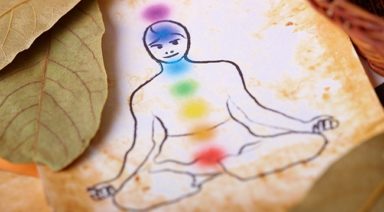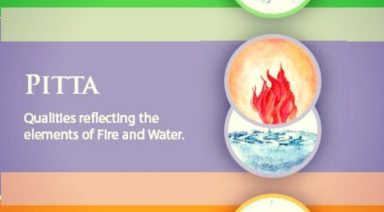Exploring Santosha

Watching for Boredom Within Contentment
Humans have a love affair with drama. The action, suspense, fall from grace, and the phoenix rising again from the ashes. Even in the surprisingly few times life is not delivering us the drama of one fire to tend and another to put out, we go looking for a spark. And then we blow. Why? Because the adrenaline fire of drama is exciting and oh so familiar. No fire feels boring, so the subconscious returns to what is known, even if it is agonizing, in order to feel alive.
The Yoga Sutras encourage the practice of santosha or ‘contentment with oneself and others.’ Far from boring, this practice requires a totally different kind of engagement with the unfolding drama of life than our typical role as flame fanner or fire extinguisher. Maybe those yogis knew how can we feel challenged and alive without burning down the house. Maybe can we cultivate a state of equanimity without it feeling boring.
Webster’s dictionary defines boredom as “the state of being weary and restless from a lack of interest.” Just try to practice santosha or contentment with a lack of interest! Notice first the impulse to ‘do’ but resist the urge to move into dramatic action. Next, observe the tendency to ‘analyze’ but surrender what has been as a good rehearsal. Finally, attempt to be completely absorbed in the action of the fire in front of you – its variety, intensity, and vibrancy – without reaching into the flame.
A different kind of internal spark alights when we practice contentment. Whereas boredom is passive, santosha is unequivocally active. Patanjali’s injunction to be content with oneself and others begins to loosen our overbearing direction of life’s drama. Rather than follow the compulsion to act at every turn – fixing, helping, analyzing, changing, improving, eliminating – we can watch until these urges subside.
Of course we must guard the danger of a swinging pendulum, from one extreme to the other, being neither frenetic fire dancer nor comatose marshmallow roaster. The still point in the middle is where we balance sensory desires and distractions with attentiveness and nonattachment . The lifetime quest of the true Yogi is the effortless embracing of equanimity and receptivity to the Divine moving into manifestation in ever-new form.
Liberation comes when we ‘no longer feel the need to act’ according to Nischala Joy Devi’s translation of Sutra 11.27 in The Secret Power of Yoga. Then, she writes, our constant companions are joy, faith, and clarity. A truly exciting and creative project usually requires that we embrace an uncertain ending. If we refuse to blow on the spark of drama, no matter how familiar the fire feels, we allow santosha to show us the way to peace. In this way we befriend the unknown and watch the magic of our story unfold.
This article is part of an ongoing series on the yamas and niyamas. For the full 10-part series click on each link below:
5 Tips to Reclaim Your Calm

Stress and anxiety have become everyday realities, especially over the last year. In fact, a survey conducted in 2020 reported that 62% of adult respondents reported experiencing anxiety on a regular basis. But what if it didn’t have to be that way?
Yoga, breathwork, and meditation can create a foundation of synchronicity in your body that allows you to regain control of your life in a way that calms your sympathetic nervous system (fight or flight response) and supports an overarching sense of calmness in our chaotic world.
These practices, while not a panacea for anxiety, can improve stress response, and have been clinically proven to do so. A recent study at New York University Grossman School of Medicine discovered that in a group of randomly selected people with Generalized Anxiety Disorder (GAD), 54% met the criteria for “meaningfully improved symptoms,” after practicing yoga.
So, what can you do to reclaim a peaceful mind and life? Here are 5 tips to get you started:
1.) Develop a regular physical yoga practice (or re-commit if you already have one)
All types of physical exercise are beneficial for decreasing stress response by improving the health of the cardiovascular system (also potentially reducing the risk of heart disease) and releasing endorphins. Yoga, however, offers a special twist of calmness and relaxation while still allowing an exertion of physical effort, creating a fertile environment to build self-awareness through mindful movement.
Because of the flexibility and strength gained through regular practice, joint and muscle pain may also be soothed through a physical yoga practice (also called Asana) by reducing stressors related to pain responses in the body. Over time, and with dedicated practice, these benefits add up dramatically, even to the point of correcting scoliosis or reducing heart palpitations. Vinyasa or Yin yoga are generally the most beneficial practices for these physical benefits.
One common misconception about yoga is that you must practice for an hour to benefit. This fallacy was derived from the fact that studio classes often run for an hour. Any amount of time spent practicing physical yoga counts, whether it be 10, 60, 90 minutes, or more!
2.) Practice 5-10 minutes of breathwork
Breathwork (or Pranayama) can be easily overlooked, even by seasoned yoga practitioners, but it is one of the most beneficial aspects of your practice. How we breathe is often directly correlated to how we feel; short and shallow breathing makes us feel closed off and more anxious, whereas long, mindful breathing creates a sense of abundance, while also promoting a more meditative and mindful state. Taking as few as five minutes a day to breathe deeply and mindfully can literally re-oxygenate the mind and body. This allows more clarity and direction in everyday scenarios, and (with the use of some specific practices, like this one), can create a space of time between a personal cause and retort, transforming reactions into more thoughtful responses.





































